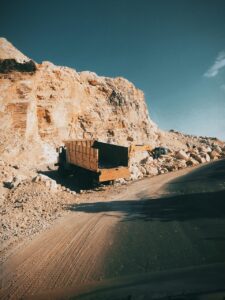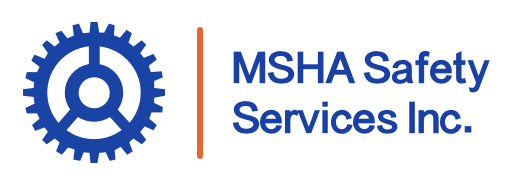Preventing slope failures and managing highwall safety are important steps to running safe and sustainable surface mining operations. Highwalls—the steep rock faces left behind by mining—can be dangerous if not carefully managed, with risks including collapses that threaten workers, machinery, and productivity. To minimize these dangers, it’s important to understand the many factors that cause slopes to fail, apply solid engineering principles, and make use of modern technology. Addressing related risks, such as rock bursts, through thorough prevention, control, and safety reporting practices also strengthens overall mine safety. This article covers key strategies—from geotechnical basics to ground support scaling and monitoring tools—that help mining teams maintain stable slopes and protect crews working near highwalls.
Understanding Slope Failure in Surface Mining
Slope and highwall stability are crucial for protecting workers, equipment, and efficient production in surface mining. A slope fails when the earth or rock can no longer hold itself up, resulting in collapses, rockfalls, or landslides. These failures can cause injuries, fatalities, equipment damage, and expensive downtime.
Understanding how slope failure happens means looking at how geological structures, rock types, and external pressures interact. When operators study these factors, they can design safer excavation angles, install effective support systems, and take steps to prevent collapses before they occur.
Slope failures aren’t always sudden—many show warning signs early on. Catching these signs through good engineering, consistent monitoring, and a strong safety mindset is key to preventing disasters.
Key Factors That Contribute to Highwall Instability
Highwall instability stems from a mix of natural and human factors. Weak rocks, natural cracks, and fault lines can weaken the structure. Weather changes—like freeze-thaw cycles and heavy rainfall—also erode rock strength over time.
Mining practices play a big role too. Slopes that are too steep, uncontrolled blasting, and narrow benches increase collapse risks. Vibrations from machinery and blasting can trigger movement in already stressed rock. Without proper design and monitoring, these risks quickly add up, creating unsafe conditions.
The Role of Geotechnical Engineering in Slope Design
Geotechnical engineering forms the backbone of slope failure prevention and highwall stability. Engineers analyze soil and rock properties, measure slope angles, and model stresses to create excavation plans that balance safety with productivity.
Good slope design takes into account material strength, water pressure within rocks, geological features, and environmental factors. The goal is to find slope angles that minimize risk while keeping operations efficient. Engineers also prepare backup plans to adapt safety measures if conditions change unexpectedly.
Managing Water and Drainage to Prevent Slope Erosion and Collapse
Water is one of the biggest threats to slope stability. Poor drainage lets water seep into rock layers, increasing pressure and loosening the bonds between particles. Over time, this weakens slopes and raises the chance of collapse.
Proper drainage systems—like surface channels, sub-drains, and pumps—help control water flow and limit erosion. Inspections after heavy rain or snowmelt are essential to catch soft spots, cracks, or leaks that could undermine stability.
Good water management extends slope lifespan and greatly reduces failure risks.
Mining Highwall Slope Stabilization
Keeping highwalls stable requires a mix of engineering solutions and careful operations. Retaining walls, rock bolts, and mesh can strengthen rock faces. Controlled blasting removes dangerous overhangs or loose rocks before they pose a threat.
An important part of stabilization is ground support scaling—safely removing loose rock using tools or machinery. This prevents rockfalls, improves visibility, and lets crews work closer to the highwall safely. Scaling should always be done by trained workers following strict safety procedures.
Preventative Measures to Reduce Slope Failure Risk
Prevention is better than reaction. Key measures include optimizing slope angles, regular scaling, controlled blasting, and ensuring proper bench widths. Keeping a safe distance between equipment and the highwall edge is also critical.
Controlling vegetation and preventing erosion help maintain slope integrity. Scheduled inspections ensure that warning signs are caught early, preventing small issues from growing into major hazards.
Monitoring Highwall Conditions: Tools and Technology
Technology has revolutionized slope monitoring. Radar, laser scanning, and drones detect tiny slope movements, allowing for early intervention.
Geotechnical sensors track stress, strain, and vibrations inside rock masses. Visual inspections verify these readings on the ground. Real-time data helps mine managers decide when to evacuate, reinforce, or scale the area.
Warning Signs of Potential Slope and Highwall Failures
Spotting warning signs early is key to rock burst prevention, control, and safety reporting. Common signals include cracks in benches, bulging rock faces, strange vibrations, and unexpected water leaks. Even small rockfalls can indicate deeper instability.
Having a clear reporting system means workers can quickly alert supervisors to hazards. Timely reports and investigations stop small problems from turning into major slope failures.
Highwall Safety Protocols for Equipment Operators and Ground Crews
Safety near highwalls starts with awareness and distance. Operators must keep equipment a safe distance from edges, stick to designated paths, and follow spotter instructions. Ground crews should only enter work zones after inspections clear the area of loose rocks.
Clear communication is vital. Everyone should know evacuation routes, emergency plans, and who’s in charge during highwall incidents.
Training Programs Focused on Highwall and Slope Safety
A well-trained team is the best defense against slope failures. Training should cover hazard spotting, how to use monitoring tools, safe scaling, and emergency responses.
Scenario-based drills help workers practice quick decision-making when slopes show instability, boosting their confidence and safety on site.
Regulations and Compliance Standards for Highwall Management
Mining companies must follow strict rules on slope and highwall safety. These cover max slope angles, bench designs, inspection schedules, and reporting.
Following these regulations prevents legal trouble and, more importantly, keeps workers safe. Successful safety programs embed these standards into daily operations, making compliance a real part of the workplace culture.

Lessons Learned from Past Slope Failures
Looking back at past failures teaches valuable lessons. Many accidents come down to missed warning signs, poor drainage, or inadequate scaling.
Learning from these mistakes highlights the importance of thorough inspections, solid engineering, and proactive safety practices.
Advancing Highwall Safety Through Proactive Slope Management
Preventing slope failures requires ongoing effort. By combining engineering know-how, good drainage, advanced monitoring, and strong safety protocols, mines can keep slopes stable and people safe.
Proactive slope management means spotting risks early, taking preventative action, and adapting to changing conditions. This commitment helps mining companies protect workers and maintain smooth, productive operations.

